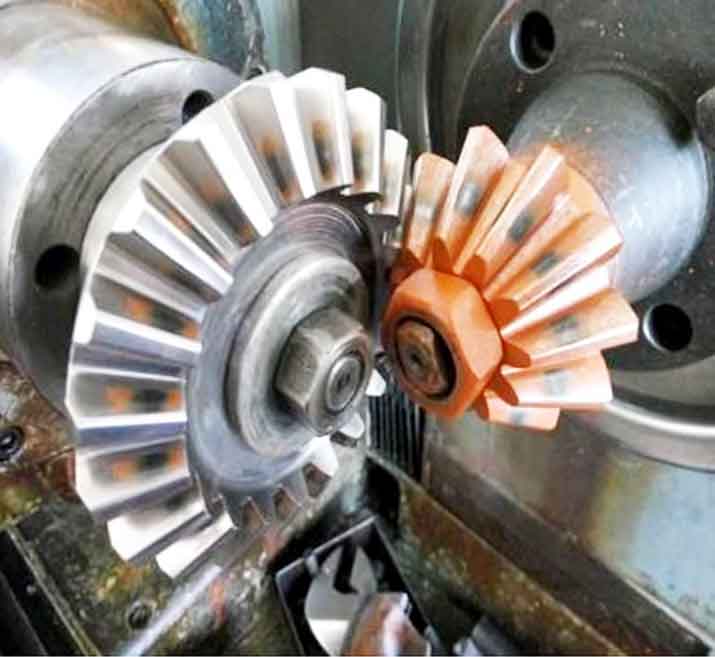. Introduction
Gear transmission is widely used in mechanical systems due to its high efficiency, large power transmission capacity, and accurate transmission ratio. Among various gear types, arc cylindrical gears have gained significant attention due to their unique advantages. Unlike traditional involute gears, arc cylindrical gears feature curved tooth lines, which enhance load distribution, reduce noise, and improve transmission stability. This article explores the design principles, manufacturing processes, and practical applications of arc cylindrical gears, aiming to provide a comprehensive understanding of their engineering potential.
2. Basic Parameters and Design Calculation
The design of arc cylindrical gears begins with defining key parameters. These parameters are crucial for ensuring optimal performance and compatibility with the intended application. Table 1 summarizes the fundamental parameters used in arc cylindrical gear design.
The geometric dimensions of arc cylindrical gears are calculated using formulas similar to those for involute gears but adjusted for the curved tooth profile. Table 2 outlines the key geometric calculations.
| Dimension | Formula |
|---|---|
| Pitch Diameter | \(d = m \cdot z\) |
| Addendum | \(h_a = h_a^* \cdot m\) |
| Dedendum | \(h_f = (h_a^* + c^*) \cdot m\) |
| Total Tooth Height | \(h = h_a + h_f = (2h_a^* + c^*) \cdot m\) |
| Tip Diameter | \(d_a = d + 2h_a = (2h_a^* + z) \cdot m\) |
| Root Diameter | \(d_f = d – 2h_f = (z – 2h_a^* – 2c^*) \cdot m\) |
3. Manufacturing Process
3.1 Cutting Methods
The manufacturing of arc cylindrical gears requires specialized techniques to achieve the curved tooth profile. Two primary methods are commonly used:
- Rotating Cutter Head Method This method involves a rotating cutter head that generates the arc profile through a combination of rotational and 进给 motions. The cutter head and gear blank maintain a precise generating relationship, ensuring accurate tooth geometry. Figure 1 illustrates the principle of the rotating cutter head method.
- Single-Edge Cutter Method To enhance precision and reduce tool wear, single-edge cutters are used to finish the convex and concave tooth surfaces separately. This approach allows for better control over the cutting process and results in higher surface quality.
3.2 Tooling and Equipment
Specialized tools and machines are essential for manufacturing arc cylindrical gears. Table 3 lists the key tools and their applications.
| Tool | Application |
|---|---|
| Double-Edge Cutter | Used for rough cutting to remove excess material quickly. |
| Single-Edge Cutter | Employed for finishing the convex and concave tooth surfaces individually. |
| CNC Milling Machine | Executes the precise movements required for generating the arc tooth profile. |
3.3 Machining Steps
The manufacturing process typically involves three main steps, as outlined in Table 4.
| Step | Description |
|---|---|
| Rough Cutting | A double-edge cutter removes most of the material to form the basic tooth shape. |
| Finishing (Convex Surface) | A single-edge cutter refines the convex tooth surface to achieve the desired profile. |
| Finishing (Concave Surface) | Another single-edge cutter completes the concave surface, ensuring proper meshing. |
4. CNC Programming
Computer Numerical Control (CNC) programming plays a vital role in achieving the required precision. The program controls the movement of the cutter and gear blank, following the geometric specifications. Table 5 provides an example of a CNC code snippet for machining an arc cylindrical gear with specific parameters: modulus \(m = 3 \, \text{mm}\), number of teeth \(z = 25\), addendum coefficient \(h_a^* = 1.0\), and dedendum coefficient \(c^* = 0.25\).
5. Experimental Validation
To ensure the effectiveness of the design and manufacturing processes, prototype gears were tested under various operating conditions. Figure 2 shows a prototype arc cylindrical gear after machining.
6. Conclusion
Arc cylindrical gears offer significant advantages over traditional gear types, including improved load distribution, reduced noise, and enhanced transmission stability. Through careful design, specialized manufacturing techniques, and precise CNC programming, these gears can be produced to meet high-performance requirements. Further research and development in materials and machining technologies will continue to expand the applications of arc cylindrical gears in various industries.

